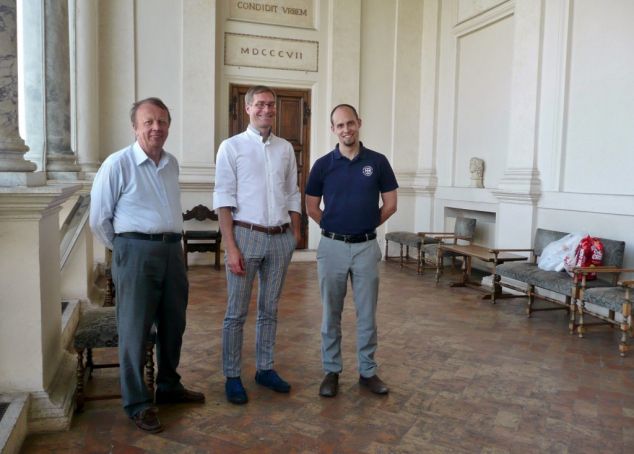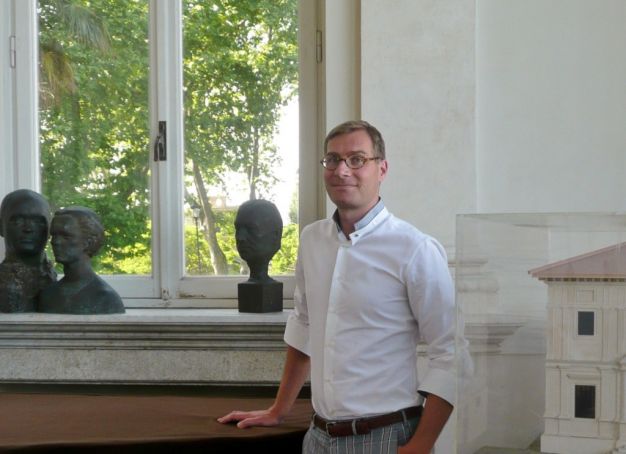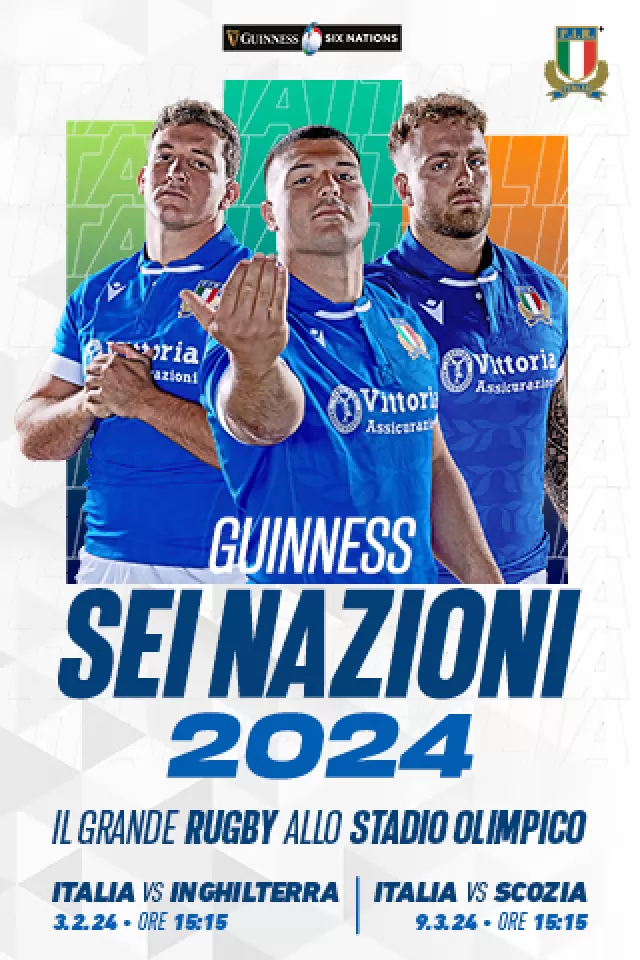Small is extra beautiful at the Finnish Institute in Rome.
The Finnish Institute in Rome – or, to give it its proper name, the Institutum Romanum Finlandiæ (IRF) – may cater to one of the smallest foreign European communities in the capital, but that doesn't mean that it lags behind. Its research work and cultural programme rival any of those of its sister foreign institutes in Italy. It even has an added advantage: it is situated in one of Rome's most beautiful Renaissance villas, crowning the slopes of the Janiculum hill with a breathtaking view over the city.
This is a special year for the IRF as it marks the 150th anniversary of the birth of Jean Sibelius, one of the most popular classical composers of the 20th century. The commemorative programme, coordinated with the Finnish embassy and the Musicaimmagine cultural organisation, comprises a variety of events relating to the life and work of the great Finnish maestro, with concerts in Verona, Turin, Avellino, Torre del Lago, Milan, Parma, Rapallo and Bologna in addition to Rome itself, with the participation of the National Orchestra of S. Cecilia, the Arena of Verona, the Puccini Festival Foundation and other Italian conservatories. Sibelius loved Italy, which he considered “the ideal land, source of Nature and figurative art” and he had a particular admiration of Rome – “the most beautiful and aristocratic” of all the cities he had visited.
The Finnish Institute is in the 16th-century Villa Lante, an aristocratic residence built by Giulio Romano, Raphael's favourite pupil. The white stuccoed vestibule on the piano nobile leads straight into the light-flooded salone, which acts as conference and concert venue. The far end is dominated by the 1866 Pleyel pianoforte that belonged to the family of Wolfgang Helbig, the eminent German classical archaeologist who died in Rome in 1915. Its doors open onto its most splendid feature – the loggia with its high columned arches overlooking the rooftops, towers and monuments of the city far below.
“This is definitely one of the perks of living here,” says director Tuomas Heikkilä, indicating the view.
IRF directors usually serve a three-year term, during which they are responsible for selecting the subject of the institute's scientific courses. This flexibility means that a wide variety of disciplines have been covered over the years as past directors focussed on their specific areas of interest. They included Veikko Väänänen, celebrated for his publications on Latin graffiti in Pompeii and on the Palatine hill, and the funeral inscriptions found in the 1950s under the Vatican; Jaakko Suolahti who documented 10,000 brick stamps of Ostia Antica; and Eva Margareta Steinby, who headed the first entirely Finnish excavation project in the Mediterranean world when her team of experts explored the Spring of Juturna in the Roman Forum during her directorship (1979 -1982). Soon after, she was appointed professor of archaeology of the Roman empire at the University of Oxford. Katarina Mustakallio, who preceded the present director Tuomas Heikkilä, researched childhood, youth and socialisation in the ancient Roman world.
Heikkilä is a mediaevalist and manuscript scholar and the line of research he is presently following involves mediaeval calendars in Europe.
“I'm intrigued by how people saw time and how they were ruled by time – by the people who decided what to do with time, the religious and political aspects. Calendars are not just a list of days. They give very interesting insights into the characters of communities. Every parish had its own calendar that was slightly different from the others, with its local feasts, saints' days and so on. One of the main points here is to introduce modern methods of study to our projects. Computers have revolutionised research and Finland is at the forefront in the field of digital humanities.”
At the moment, he is flanked by three other academics at the IRF – vice-director Ria Berg, responsible for ancient studies; Simo Örmä, who is in charge of the cultural programme; and Wihuri Foundation Fellowship holder Marko Halonen, who is preparing his PhD on the mediaeval calendars of Scandinavia, as well as being an artist working in the studio on the ground floor.

“We can accommodate 13 fellows. Six of the places, however, are reserved for people doing individual research – authors, musicians, composers, artists, designers. Subjects studied are ancient and mediaeval history, classical languages, history, art and archaeology.
“There is fierce competition for our annual courses. We had 65 applicants for the seven places available for our next course, starting in September.”
The Institutum Romanum Finlandiæ is a relative newcomer to the Roman scene.
“We opened in 1954. This was the first Finnish Institute abroad. We are run by a foundation constituted in 1938 – that was just 20 years after Finland became an independent republic.”
For centuries, powerful neighbours Russia and Sweden had fought over Finnish territory. Nonetheless, Finland managed to stay in the forefront of progress. It was the first European country to give women the vote and the first in the world to have women elected to parliament. In addition, Finnish schools have consistently come out tops in PISA (Programme for International Student Assessment) since it was introduced in 2001. All of which is not bad for a small country with a population of little over five million.
“Finland has a strong tradition in the humanities field,” Heikkilä says. “Despite the dominance of the Russian empire, we have always felt ourselves part of Europe and western civilisation.”
Rome was therefore a natural choice for the first Finnish institute abroad. A plot of land was earmarked in Valle Giulia, where several other foreign academies are based, but plans were scuttled by the outbreak of world war two. The first designated director was killed in action. By the end of the war funding was no longer available.
The opportunity to acquire Villa Lante came as a stroke of luck. In the 1940s it was owned by General Demetrio Helbig, son of the archaeologist Wolfgang Helbig, who rented the top floor to the newly appointed Finnish chargé d'affaires to the Holy See, Göeran Stenius. The two men became good friends and Helbig eventually offered to sell the villa to the Finns at a bargain price. Entrepreneur and philanthropist Amos Anderson came up with the money to fund the purchase. The foundation had at last found the home it was seeking.
The IRF runs a programme of cultural events open to the public which can be viewed on its website. However, not many people know one of Rome's best kept secrets: the Villa Lante can be visited every weekday from 09.00 until midday. That's a real bonus.
Margaret Stenhouse
This article appeared in the July edition of Wanted in Rome magazine.
General Info
View on Map
The Finnish Institute
Institutum Romanum Finlandiæ, Villa Lante, Passeggiata del Gianicolo 10, tel. 0668801674.






















